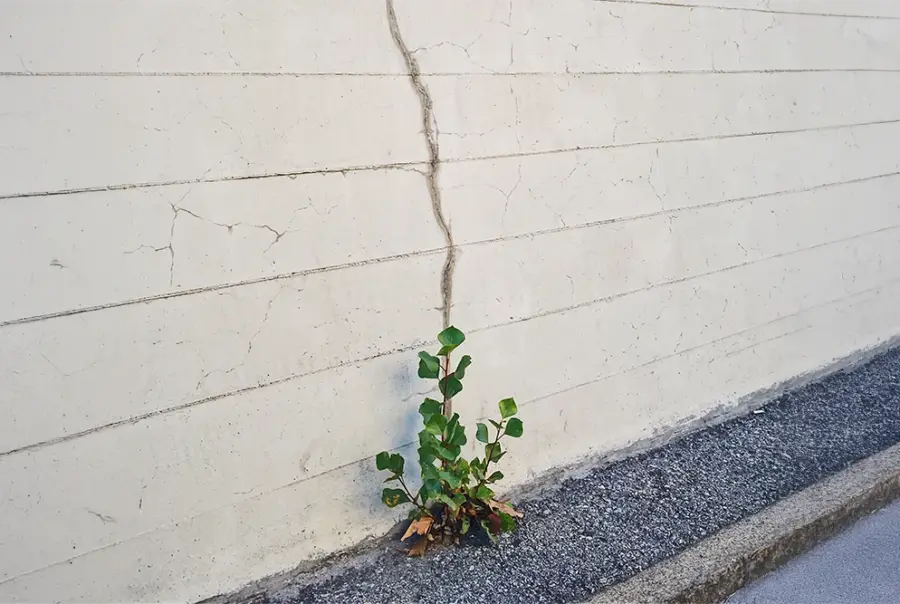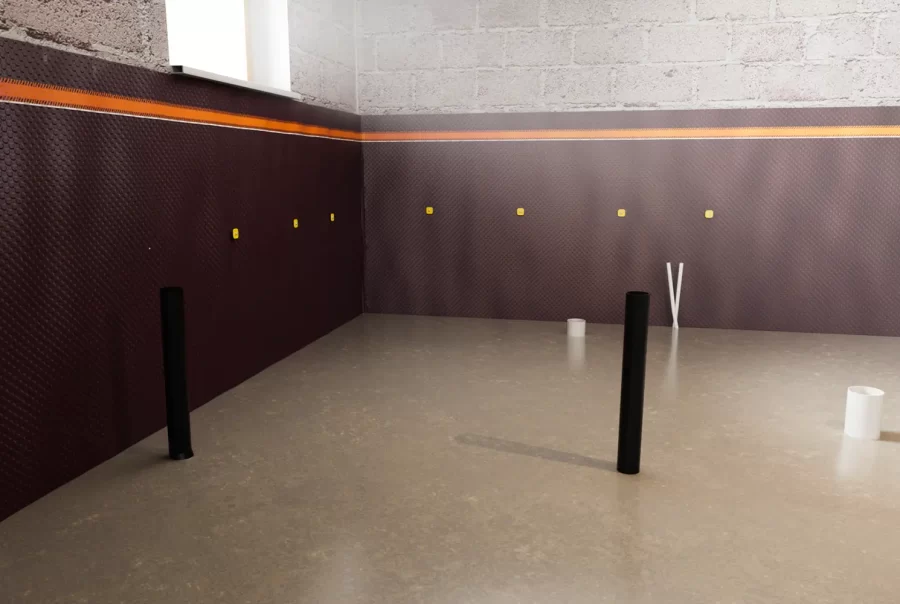Are you considering restoring your home’s foundation but unsure, can you stay in your home during foundation repair? This important question concerns many homeowners. It may seem to you that foundation strengthening is just a technical task. But that is not entirely true. In practice, such work can seriously affect your comfort. Access to utilities may even be lost, requiring temporary moving elsewhere.
In this article, we’ll examine: can you live in a house during foundation repair or is temporary moving the better option? You will also learn what safety precautions exist so that your home remains suitable for living during the work.
Understanding Foundation Repairs
The foundation is the base on which the stability of the entire building structure directly depends. It bears the main load from the:
- walls;
- floors;
- roofs;
- all interior contents of the house.
If there are any problems with the foundation, it can lead to serious consequences.
It’s worth noting that even the strongest foundation can fail over time. The main causes of damage include:
- Soil shifting and settling. This is especially relevant in unstable or overly moist areas.
- High moisture levels. Risks arise due to poor drainage, flooding, or proximity to groundwater.
- Temperature fluctuations. Cycles of freezing and thawing cause constant expansion and contraction of materials, leading to microcracks.
- Design or construction errors. Poor-quality materials, insufficient depth, or lack of reinforcement can negatively impact foundation stability.
- Structural aging. Over time, concrete loses its strength, especially without proper protection and maintenance.
Foundation repair in Toronto is not just about sealing cracks. It’s a complex task requiring accurate diagnostics, calculations, and the right repair method.
Depending on the specific situation, the following methods may be used:
- Pouring a new concrete layer. This method restores damaged sections, increases strength, and prolongs the structure’s lifespan.
- Deep reinforcement with pile systems. This involves installing metal or screw piles, helping redistribute the load to stabilize the building.
- Waterproofing work. This involves the application of protective coatings, the installation of drainage systems, and membranes designed to shield the foundation from water.
- Injection techniques use pressurized special compounds to fill cracks, voids, and gaps within the structure, effectively halting further deterioration.
All these measures require qualified specialists, professional equipment, and strict adherence to technology.
When Can You Stay in Your Home During Foundation Repair?
Homeowners may remain in their homes during foundation repairs, provided the work doesn’t impact critical structural components and all safety guidelines are strictly observed.
This is possible under the following conditions:
- The repair is done only on the exterior of the building, without damaging interior load-bearing walls, partitions, or floors.
- Low-noise and low-vibration technologies are used (such as injection methods or local reinforcement), which do not cause significant discomfort.
- Partial reinforcement, sealing, or waterproofing of foundation cracks is performed without full demolition or replacement of the foundation.
- Utilities are not affected, meaning water, electricity, and heating remain operational.
In these situations, simply adhering to basic safety precautions and coordinating the work schedule with the contractor in advance is sufficient.

When You May Need to Move Out Temporarily
Nonetheless, there are circumstances where having residents stay in the house during foundation repair is not only inconvenient but also potentially hazardous. This applies to cases when the work affects key structural elements or involves significant interventions in the building’s foundation.
In which situations is it important to soberly assess the risks:
- Serious damage to the foundation. If the integrity of the supporting elements is compromised, there is a threat of settling or even partial collapse of the structures.
- The house needs to be lifted on jacks. This procedure requires maximum precision, elimination of any vibrations, and complete unloading of the premises.
- Large-scale earthworks are being carried out (excavation of pits, foundation replacement, installation of piles or drainage systems). These processes involve increased danger.
- High level of construction discomfort. Constant noise, dust, limited access to certain rooms, temporary disconnection of water or electricity.
In such conditions, temporary moving out is the most reasonable solution. Additionally, the absence of residents in the house helps contractors to work faster and more efficiently.
Tips for Living at Home During Foundation Repairs
If you decide to stay in the house during foundation repair, prepare in advance and organize your space. This should be done to minimize stress, dust, and potential inconveniences.
Here are seven practical recommendations from our specialists that will help you maintain comfort and safety:
- Discuss with the contractor a detailed work plan. Be sure to clarify the schedule, the duration of each stage, and possible temporary disconnections of utilities (water, electricity, heating).
- Isolate active work zones. Limit access to them using polyethylene curtains, construction screens, and temporary partitions to reduce dust spread.
- Protect furniture and appliances. Cover large household appliances, cabinets, textiles, and electronics with film or cloth, especially in basement rooms.
- Take care of soundproofing. Use thick curtains, rugs, bookshelves, and soft furniture to reduce noise levels.
- Pay special attention to the safety of children and pets. Under no circumstances allow them near areas where active work is taking place.
- Regularly inspect the house. Watch for new cracks, door misalignments, or other signs of possible problems. Report all observations promptly to the contractor.
- Consider organizing daily life. Decide in advance where to cook or rest if part of the house will be temporarily inaccessible.
Following these recommendations will allow you to live in the house during repair work with minimal inconvenience.
Signs That You May Need Foundation Work
Timely detection of foundation problems not only helps avoid serious future destruction but also expensive major repairs. Many signals become noticeable even before critical deformations appear.
Pay attention to the following:
- Cracks in walls, floors, and masonry. Particularly dangerous are those appearing in corners, above window and door openings, or shaped like a “stair-step” in brick (block) masonry. They may indicate uneven foundation settling.
- Misalignment of doors and windows. If the sashes begin to jam or close poorly, this may indicate deformation of load-bearing structures.
- Floor slopes. This is the most obvious sign that the foundation has “settled” or shifted.
- Dampness and mold in the basement. Persistent moisture, a musty odor, and mold growth on walls or floors can indicate both damaged waterproofing and the presence of foundation cracks.
- Soil subsidence near the house — such as the formation of pits or voids around the foundation — may indicate soil erosion and weakening of the foundation.
If you observe any of these signs, seek expert advice without delay.

How the Foundation Repair Process Works
Depending on the nature of the cracks, the type of foundation, and the chosen method of repair, the process may consist of the following key stages:
- Inspection and diagnostics. Based on the obtained data, an individual work plan is developed.
- Site preparation. Before starting, it is necessary to ensure convenient and safe access to the foundation. This is especially important in cases where underpinning Toronto is planned..
- Main work. The kind of damage dictates which technologies will be used. For example, basement waterproofing Toronto may be performed to protect against moisture and mold.
- Final stage. Restoration of the external and internal appearance of the building is carried out.
Absolutely any foundation repair must be performed with strict adherence to design documentation as well as technical regulations.

Cost of Foundation Repair
Foundation repair cost depends on the following factors:
- Type of foundation. Different constructions require different approaches. For instance, a strip foundation is simpler to repair, but if significant structural changes occur, reinforcement may be necessary along its entire length.
- Degree of damage. Small cracks and imperfections are repaired fairly quickly and at a low cost.
- Chosen technology. For example, injection methods (polyurethane, epoxy resins) cost less and require less time.
- Volume and area of impact. The larger the area requiring repair, the higher the cost of materials and the more labor required.
It is recommended to carry out all work under the supervision of experienced specialists and using proven technologies to avoid repeated interventions.
What Is the Duration of Foundation Repairs?
The duration of preparatory, execution, and finishing works increases proportionally with the complexity of the situation.
In general, repairs can be classified into three groups:
- Minor (2–5 days). Includes crack sealing, localized injection fillings, restoration of individual waterproofing
- Medium complexity (1–2 weeks). Includes foundation reinforcement, installation of additional supports or piles, strengthening of the concrete base, and comprehensive waterproofing.
- Major (up to 1 month or more). These are the most complex cases requiring serious interventions (for example, lifting the building, complete replacement of load-bearing elements).
Additional factors may also affect the timing (weather conditions, unexpectedly discovered hidden defects, etc.).
What Homeowners Can Do to Avoid Foundation Issues
Foundation problems do not arise overnight. Regular preventive measures help avoid costly interventions in the future.
For this, it is necessary to:
- Control the moisture level on the site. Excessive water is one of the main causes of foundation destruction.
- Conduct regular foundation inspections. At least once a year, but especially after snow melts in spring or heavy autumn rains.
And, of course, respond timely to minor defects. Even a small crack in a wall or floor can indicate the beginning of a big problem.
Professional Help From Quality Age Build
The company Quality Age Build offers comprehensive services for inspection, diagnostics, and foundation repairs in Toronto and surrounding areas. We use modern technologies, certified materials, and provide guarantees for all types of work.
If you notice cracks, misalignments, settlements, or moisture appearance — this is a direct reason to conduct diagnostics! Contact us, and we will ensure reliability and durability for your home!

Conclusion
Foundation repair is not only about the strength of the entire house but also about the safety of your family. If you are unsure, can you live in a house during foundation repair, consult with specialists. In most cases, living in the house during foundation repair is possible.
Contact us
Quality Age Build Inc is at your service across the GTA. Request a quote today and ensure your property is in expert hands.
Related Services
Pair our expert guidance with our foundation services to establish a solid base for your build, ensuring durability and peace of mind.
FAQs
Is it safe to stay in a house during foundation repair?
Yes, provided the load-bearing structures remain sound and safe methods are applied.
What types of foundation repairs require you to leave your home?
If building lifting is required, load-bearing parts are replaced, or large-scale earthworks are carried out.
How long does foundation repair typically take?
From several days to several months depending on the complexity of the project.

